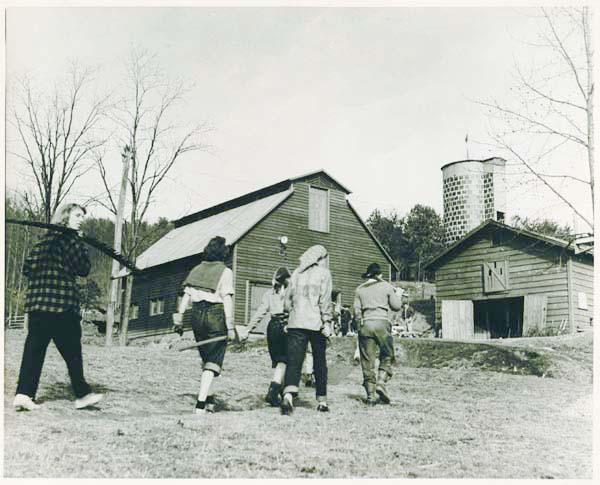Black Mountain College, one of the birthplaces of the Avant-garde movement, was founded in 1933 and closed in 1957. The Asheville liberal arts college had a small attendance but deep impact that still resonates within universities today.
David Silver, an associate professor of urban agriculture at the University of San Francisco, is studying Black Mountain College. He spoke Monday at Hunt Library Auditorium about the college, particularly its farm.
Students grew their own food on the college’s farm. It provided a unique learning experience that some universities are imitating today.
“During my research, I noticed that when the students talked most passionately about the school, they spoke about the farm,” Silver said. “When the farm was thriving, the school was thriving.”
Silver said when the farm declined, it correlated directly with the school’s eventual closing.
Students attempted to start a farm in the fall of 1933 when the school opened. By 1947, it was a full-scale farm that provided 65 percent of the vegetables eaten at the college.
Milk, cheese and meat were also produced on the farm.
The farmers at Black Mountain College became experts in sustainable agriculture, which Silver says is crucial to the future of agriculture. It provided healthy food to a self-sustaining population.
“Imagine if more colleges were like this. Imagine how much healthier our students would be and how much less we would waste,” Silver said.
John Andrew Rice founded the college with the mission to educate citizens rather than scholars, according to Silver. The school was owned completely by faculty and there was no board of directors.
The school educated Merce Cunningham, Ruth Asawa and Josef Albers, among other famous artists, poets and architects.
In 1954, the college was too broke to continue the dining hall, and it closed. In this year, the last Black Mountain College farmer also left. The college officially closed in 1957, but cultural researchers and art historians still study the college today.
“People still know Black Mountain College because it is arguably the most famous art college in U.S. higher education,” said Silver. “Aside from New York, it was the birth place of the Avant-garde movement.”
This small, remote college helped birth an art movement, but the college should be known for more than that, according to Silver.
After renting out the local YMCA during its beginning years, students built their own campus. It was the ultimate hands-on learning experience. And more than that, it was a growing experience.
“Black Mountain College was a live and learn community. They learned by building, and we have much to learn from it,” said Silver. “It is important for students and faculty from different disciplines to come together. That is when creative work and research really get done.”
Silver was surprised to see how little North Carolinians knew about Black Mountain College when he visited to study the school’s archives.
“I spoke with a man from Black Mountain, and he had no idea what the college was,” said Silver.
Christopher Ackerman, a junior in natural resources, had heard of Black Mountain College, but did not know much about it when he walked into the talk.
“I came into the lecture knowing little, but I left with a new-found respect,” Ackerman said. “The work of the students and faculty at Black Mountain College was astounding, and the legacy they left was even greater.”





